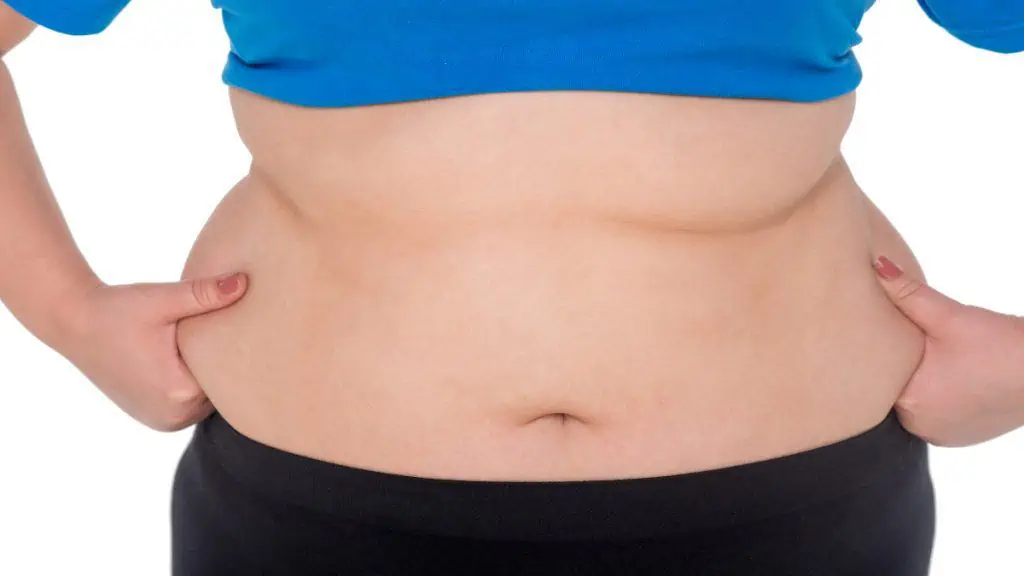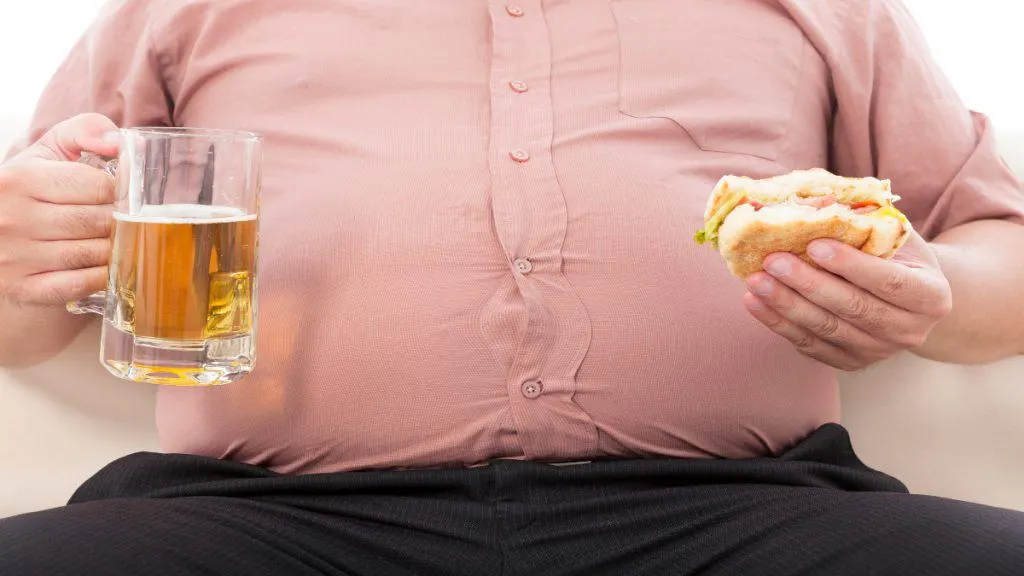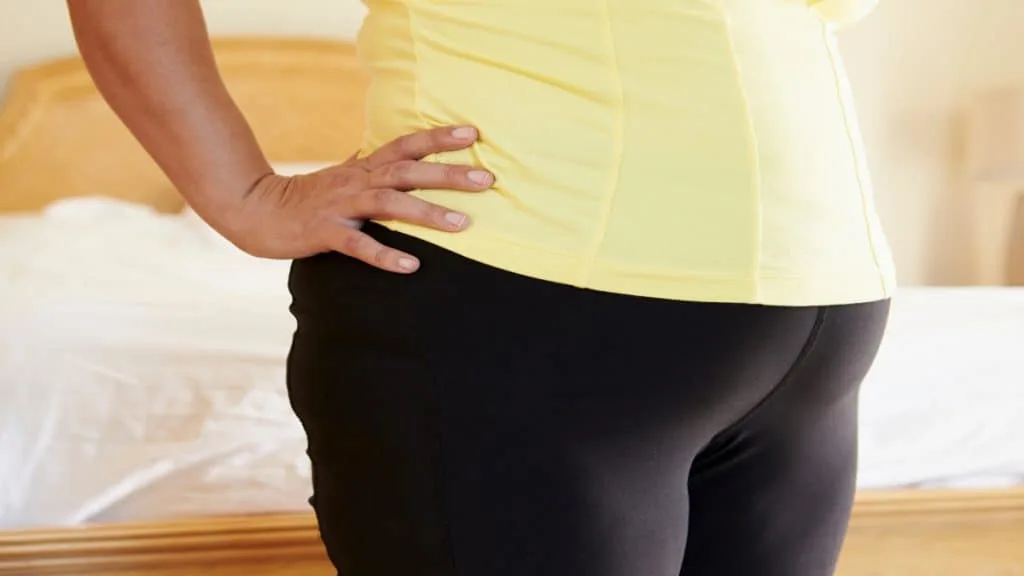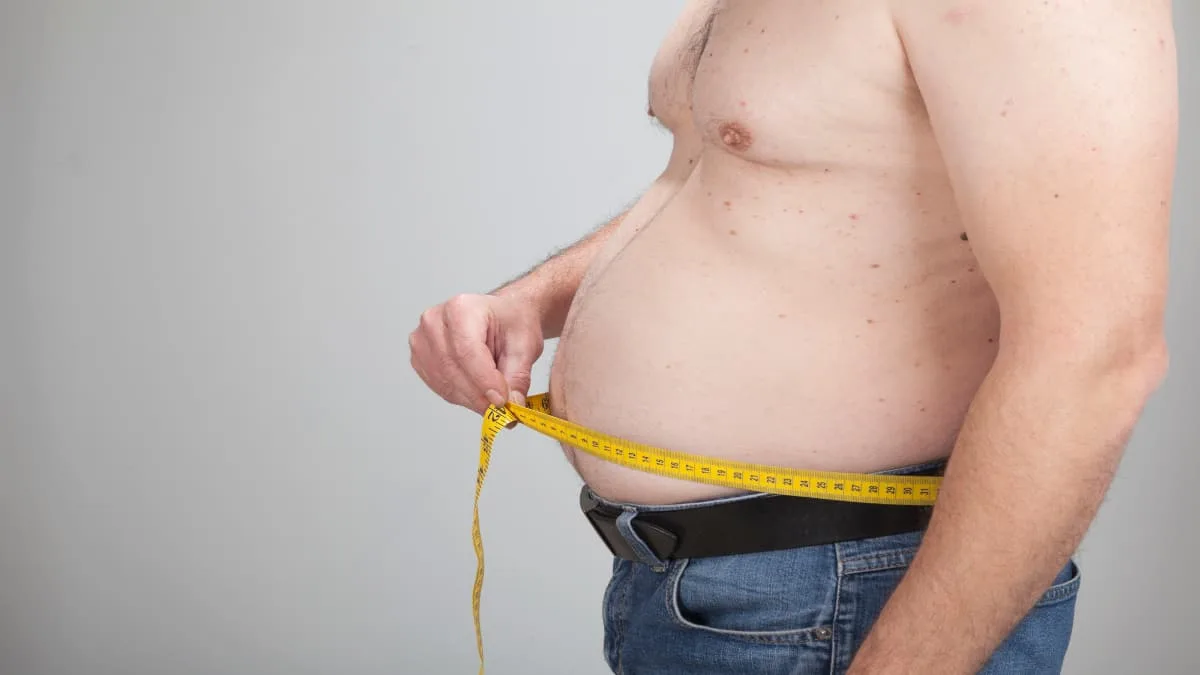A 48 inch waist is much larger than the normal waist size for adult men and women. Specifically, it’s around 8 inches bigger than average for men and approximately 10 inches bigger than normal for a woman.
Even though you can have a positive view of your body while being overweight, you simply can’t enjoy your best health while walking around with a 48″ waist.
Using obesity research, this guide sheds light on some of the health consequences that people with a 48 in waist commonly encounter. After that, you’ll learn some simple yet effective strategies for shedding your stomach fat, which will help to improve your quality of life.
Why is a 48 inch waist too big for men and women?

The reason that a 48 inch waist is too big for men and women is that it’s way above the medically-accepted cut-off points for being considered low risk of chronic disease. The exact numbers differ slightly based on the source, but researchers commonly note that a man’s waist shouldn’t exceed 37 inches, and that a woman’s waistline shouldn’t be any bigger than 35 inches.
So, at 48 inches, your waist is more than 10 inches bigger than it should be. While there are plenty of clothing options for people with a waist this size these days, such a body shape is also indicative of being unhealthy.
Indeed, studies show that having more visceral fat, which commonly accumulates when you have a larger stomach, leads to an increased incidence of coronary artery disease, among other diseases. [1]
In the short term, you might also experience joint pain from carrying around excess body fat. This uncomfortable sensation can make life less enjoyable and make everyday tasks more difficult to accomplish.
What causes someone to have a 48 in waist?

Some people have a genetic predisposition to storing body fat in general and storing fat in certain areas. Men, for example, typically store more fat on their stomach, whereas women tend to store more of their body fat on their legs and hips.
As a woman ages and reaches menopause, however, she may begin to store more fat around her waistline, which will naturally cause her waist measurement to increase.
Although your genetics may well account for some of your stomach size, it’s highly unlikely that they’re the sole culprit.
Weight gain and weight loss are, after all, fairly simple in theory. If your body has an excess of energy, it puts on mass. If your body has a deficit of energy, it sheds weight.
As such, most people with a 48 inch waistline likely overeat and live a pretty sedentary lifestyle, which, when paired together, naturally causes their body to store fat.
How can you slim your 48 inch waist?

As noted above, losing weight boils down to ensuring that your body is in an energy deficit. In practice, this means eating fewer calories than your body requires to maintain its current weight.
So, if you’re currently eating 3000 calories per day, drop your intake down to 2500 daily calories and observe the weight loss. You should lose around a pound per week with a 500 calorie deficit.
Your food choices are also important. While it’s possible to lose weight while eating whatever you like as long as you’re in an energy deficit, such an approach to weight loss is far from ideal for your health because junk foods are usually devoid of vital vitamins and minerals.
Instead, eat healthy whole foods. There are plenty of amazing recipes in cookbooks and online, but some foods that you should look into include fish, lean meats, yogurt, nuts, berries, potatoes, quinoa, beans, avocados, tomatoes, and oats.
As you might have guessed, exercise also plays a key role in any successful stomach-slimming regime. Besides promoting weight loss, exercise can also independently increase your cardiovascular fitness and prolong your lifespan. [2]
Some of my favorite movements are burpees, jumping jacks, and squats because they work some of the biggest muscle groups in your body (which means that they burn plenty of calories) and are incredibly convenient to perform—no weights or gym required.
Conclusion: Should you be worried about your 48 inch waistline?

Since having an excessively large waist is associated with a shorter lifespan, [3] you should seek to slim your 48 inch waist by increasing your activity level and eating a healthier diet.
Even if you can only manage a short walk initially, that’s a good start. It’s much better than sitting on the sofa because walking burns calories and can be a very enjoyable activity if the setting is nice.
High-intensity exercise certainly burns lots of calories and can actually make you feel really happy (thanks, dopamine boost). However, it’s best to work your way up to intense training sessions by getting used to the exercise that you intend to perform.
So, if you’re working out at home, you could do some jumping jacks paired with squats. This pairing will definitely challenge you, but it won’t completely wipe you out if you rest after each superset.
References
- Nakamura, T., Tokunaga, K., Shimomura, I., Nishida, M., Yoshida, S., Kotani, K., Islam, A. W., Keno, Y., Kobatake, T., Nagai, Y., Fujioka, S., Tarui, S., & Matsuzawa, Y. (1994b). Contribution of visceral fat accumulation to the development of coronary artery disease in non-obese men. Atherosclerosis, 107(2), 239–246. https://doi.org/10.1016/0021-9150(94)90025-6
- Reynolds, G. (2021, December 20). Why Exercise Is More Important Than Weight Loss for a Longer Life. The New York Times. https://www.nytimes.com/2021/09/29/well/move/exercise-weight-loss-longer-life.html
- Gersh, B. (2009). General and Abdominal Adiposity and Risk of Death in Europe. Yearbook of Cardiology, 2009, 325–328. https://doi.org/10.1016/s0145-4145(09)79491-2

